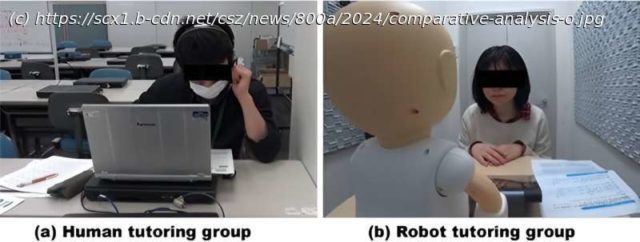Advancements in large language models, robotics, and software such as text-to-speech, have made it possible to develop robots that can understand language, interact physically, and communicate verbally. These breakthroughs have opened up possibilities for robots to be used for educational purposes. However, this raises the question of whether robots are as good as human tutors. While robots offer certain benefits, they cannot replicate the nuanced interactions and personalized feedback human tutors provide.
Advancements in large language models, robotics, and software such as text-to-speech, have made it possible to develop robots that can understand language, interact physically, and communicate verbally. These breakthroughs have opened up possibilities for robots to be used for educational purposes. However, this raises the question of whether robots are as good as human tutors. While robots offer certain benefits, they cannot replicate the nuanced interactions and personalized feedback human tutors provide.
To determine the suitability of using robots for education, Associate Professor Takamasa Iio from Doshisha University, along with Associate Professor Yuichiro Yoshikawa, Professor Hiroshi Ishiguro from Osaka University, and Associate Professor Kohei Ogawa from Nagoya University, Japan, compared the performance of current Robot-Assisted Language Learning (RALL) systems to human tutors. Their study, published in the International Journal of Social Robotics, explored the effectiveness of each approach in improving students‘ English-speaking skills in second language learning.
„There has been an active movement to utilize robots in education, particularly in language education, which requires communication.
Start
United States
USA — IT Team compares robot-assisted language learning systems and human tutors in English conversation...






